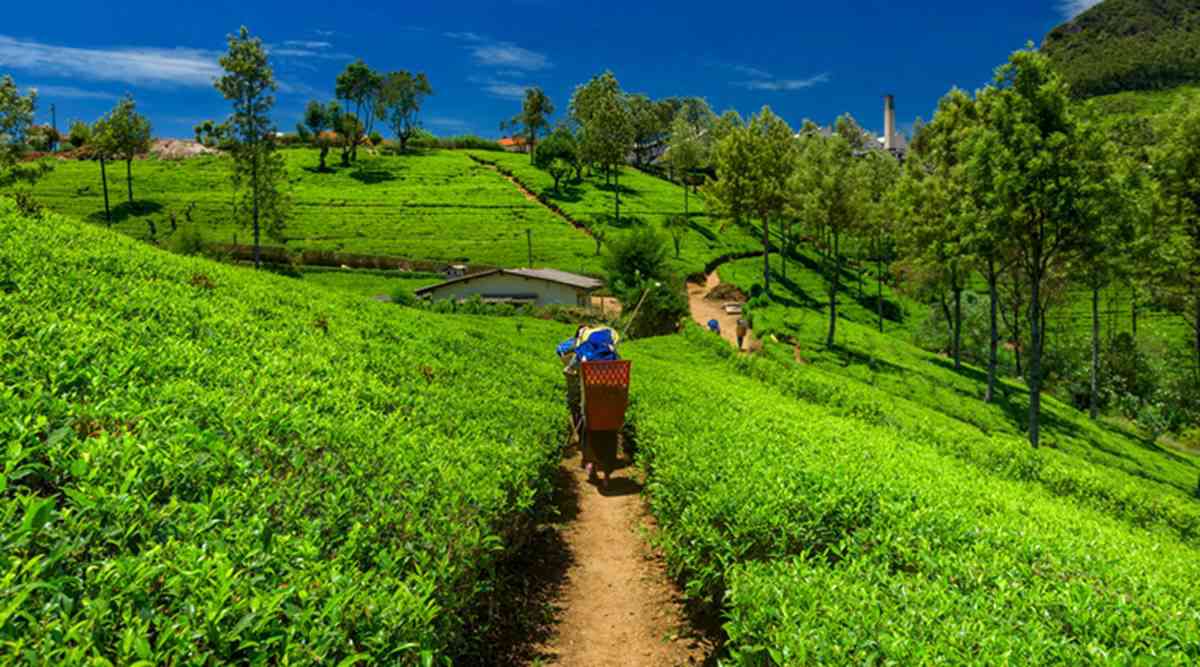Which Indian tea producing area tastes good? Indian black tea producing area Assam Darjeeling Nilgiri Congra
Everything from man to tree is the result of conditionality. We are what we suffer-people, places and conversations. Unsurprisingly, this statement also applies to tea.
Have you ever wondered why Darjeeling Tea or Assam tea tastes like this?
Think about it. For example, when we talk about typical Darjeeling Tea or bold Assam tea, notice how we relate these teas to their origin. This is a noteworthy connection. More importantly, because Indian tea is usually identified first by origin, then by variety.

This is largely due to the firm belief that the land where tea is grown has a unique quality, which is unique to the site. It is very similar to wine-every vineyard produces Cabernet Sauvignon, but there is a difference between Cabernet Sauvignon made in Burgundy and Cabernet Sauvignon made in Bordeaux.
A kind of tea is determined by the air around it, the soil that nourishes it, and the hands that pick and process it. Therefore, it is not an exaggeration to say that the appreciation of tea is inadvertently the appreciation of the origin of tea. When you talk about the taste of a certain tea, its elegant aroma, or the lingering smell that seems to occupy your whole mood, you are somewhere admiring the soil of the tea manor, which injects all the benefits to the crops.
Let's take a closer look at how a tea-growing area can help us build the classic features that we have associated with all kinds of Indian tea. This article is an ode to the soil of tea gardens in India.
1. Black tea from Assam
This area is famous for its black tea, which grows in the lowlands of the nutrient-rich Brahmaputra River Valley. The tropical climate in Assam is suitable for growing tea with large leaves, fresh, malt and bright colors. This quality makes Assam tea an ideal breakfast tea that can be enjoyed with milk or cream.

two。 Exquisite black tea from Darjeeling
Lobular tea from Darjeeling Highlands is cool all the year round, which is typically characterized by light color, thin body and obvious astringency, so it is called champagne in tea. The air of this Himalayan plain is filled with ozone, and the process of growing tea remains largely traditional, ensuring that delicate tea is carefully picked, gradually withered in the air and slowly distorting its shape. In fact, the tea-growing areas of Nepal have similar land conditions, but the tastes of the two kinds of tea are very different-both due to the different conditions they accept.

3. Fragrant tea from Nilgiri
Located at the southern tip of the Indian subcontinent, it is famous for producing the popular white orange. But this is not the Nilgiris that people can believe. This quaint little paradise from southern India-thanks to its lush tropical climate-is known for producing dark, fragrant teas, making them the best choice for producing orange white hairs and CTC varieties. Nilgiri tea is still grown in a traditional way by a small number of local agronomists, and it is planted around a rich flower habitat, giving it a classic aroma.

4. Unique Chinese and Indian tea from Kangala
Often compared with Darjeeling Tea, what makes Kangla tea unique is that it is obviously less astringent than its notorious counterparts. In addition, it is the only tea area in India that grows hybrid tea plants from China or Indochina. The classic feature of Kangla tea comes from the fact that it is grown in a very traditional way in an all-organic region of northwest India. This is why Kangla tea is particularly grassy, mellow and subtly sweet.

Important Notice :
前街咖啡 FrontStreet Coffee has moved to new addredd:
FrontStreet Coffee Address: 315,Donghua East Road,GuangZhou
Tel:020 38364473
- Prev

Darjeeling black tea which manor is good? the difference between Darjeeling black tea season and grade
The choice of spring tea and summer tea is the first step in the integration of knowledge and prudence. Now it's a more casual step: choose real estate. Don't think of it as choosing tea, but choosing a restaurant. There are so many excellent manors, so many individual advantages, and so much expertise that it is impossible to recommend any of the best. Every Darjeeling Red
- Next

Black tea production process | how is black tea produced? History and advantages of tea mill
In addition to being a flashy title for Britain, as in Britannia Rules the Waves, Britannia is also a trade name, referring to a series of machines invented by the young inventor William Jackson in the 1870s. His tea mill was the main innovation that directly changed Assam.
Related
- What is the standard process for the purpose of coffee cup testing? What is the difference between hand-brewed coffee and cup testing?
- How to use hand-brewed coffee paragon small golden balls? How does cold coffee lock in the aroma of coffee?
- Is American coffee black? What is the difference between American coffee and drip coffee?
- Unexpected! Well-known tea beverage brand Lele Tea will withdraw from the Zhengzhou market!
- Starbucks enters the fashion and beauty industry?! Netizen: Give me an ice American eye cream
- Why can American refills for free? The difference between Americano and American drip pot coffee
- Being chased out of the rain in front of Starbucks?! Store: Sheltering from rain under umbrellas poses a safety hazard
- The white moonlight has changed?! Lucky launches "Big Winter Pear American"
- Hand-brewed coffee three-stage method, high-sweet and universal brewing method to share! What does the high sweet water level of hand-brewed coffee mean?
- What is the difference between raw, refined and full espresso coffee? How to extract espresso and taste good?

